Happy summer, folks. I hope wherever you are, you’ve had some time to relax and recharge — a tall order in this business, but also as I’m finding, very important. I still haven’t decided how often I’ll be writing these, but figured one was due as the past few months were wicked busy. If I’ve seemed MIA, it’s because I’ve been making my way through Armenia, Georgia, and Spain, and am pushing out this newsletter en route to Morocco. More thoughts on taking time off as a freelancer at the bottom.
A fair warning: this piece will be more of a field diary about brown bears and salmon. Or as I’ve started referring to it — my bear story. A bear talk, if you will. It’s a wee-bit long, so is best viewed in your browser or Substack app!
A month ago, I wrapped up an incredible trip to Brooks Camp in Katmai National Park. My partner and I spent nine days and eight nights camping on the peninsula to observe brown bears returning to fish for the beginning of the annual salmon run. We do a fair bit of camping, but this trip was definitely a check off the bucket list and hopefully not the last time we stay in Brooks Camp. I could write a whole other newsletter on how competitive permits have become (this was my Eras Tour) and the way we impact wildlife at national parks, etc. But for those unfamiliar with Katmai, salmon migratory patterns, or the cult following that Brooks Falls bears have gained online, I will try to bring you up to speed…
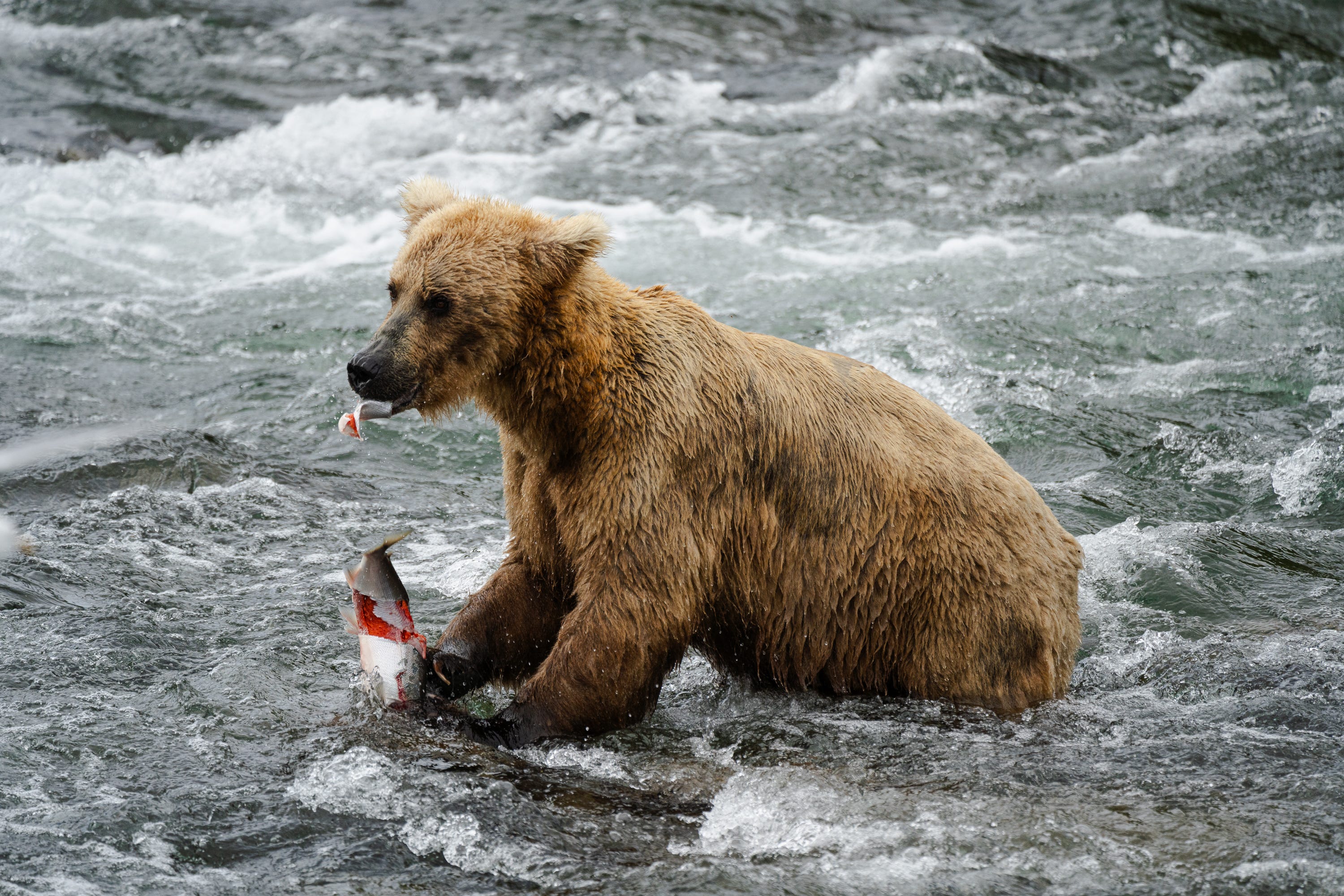
Brooks Camp at Katmai National Park is known for its fishing and brown bear viewing, made possible by the annual migration event called the salmon run.
After spending most of their adult life in bodies of saltwater, salmon between the ages of 3 and 5 years old swim upstream to return to the freshwater bodies where they were born. There, they spawn and die. Brooks Lake, which feeds Brooks River, and then empties into the Naknek Lake, is one such spawning ground. Each year in late June and early July, salmon begin arriving in droves to complete this pilgrimage that feeds the entire ecosystem.
Katmai National Park is home to approximately 2,200 brown bears, and by this time in the summer post-hibernation, they have a real hankering for salmon. Brown bears are omnivores, and can often be seen eating different grasses, roots, and berries. The good stuff, though, is in the sockeye salmon, which at around 4500 calories a fish, is the perfect (and yummy) meal for a bear that needs to start gaining anywhere from 3-6 lbs/day to prepare or winter. A dominant male can eat up to 30 fish in one day! Being the opportunists that they are, bears take advantage of the barrier created by Brooks Falls that salmon must jump over to eat their fill in salmon in early summer and then again as the salmon carcasses wash downstream in August and September.
At Katmai, people are allowed to watch bears fish from designated platforms, and fish in areas downstream of the falls. When the humans can behave themselves, it’s an amazing experience. This feels like the right time to explicitly state that yes, brown bears are wild animals that may look very cute, but could probably eat me for dinner in three minutes. While the bears at Katmai are relatively accustomed to seeing humans and are much more interested in eating salmon, the rule is to keep 50 yards away from the bears if possible, and all visitors must attend a bear safety presentation (aka Bear School).
The salmon run also started a bit late this year. Usually by late June and early July, the fish are regularly jumping. But due to a long winter and colder water temperature (one of the cues salmon follow to start running is warmer water temperature), the salmon were later than usual, and consequently so were the bears. It made it all the more special every time I saw a bear.
Since 2012, Katmai National Park has partnered with Explore.org to bring the public a live stream bear cam from late June to early October (do it — click on the bear cam and watch some bears). Like some people, I became familiar with the Brooks Falls bears at the height of the pandemic when a live stream of wild animals was a welcome reprieve from the dumpster fire we were living.
You also may have heard of Brooks Falls in the context of Fat Bear Week, where humans on the internet vote in a bracket-style elimination contest for the bear that we think has put on the most salmon pounds, is the biggest, chunkiest, and therefore the most prepared to hibernate for the winter. This contest has captured the hearts of folks all around the world, with over 700,000 people voting in 2021.

A contributing factor to the cult following that these bears have amassed is the fact that the internet likes to name them. We are very good at that. While rangers will assign bears that return to Katmai specific numbers, some of the bears have acquired nicknames from online bear viewers that range from Chunk to Holly. And if you watch the bear cams (and follow Katmai Facebook groups) for long enough, you can learn to identify them, too.
I would have been happy enough to watch a bear just sit on a rock and contemplate life (surprise, I did — see below). What I didn’t expect was that, in observing bears’ behaviors and interactions with each other for nine days, I’d get to know them as individuals. By the end of my trip, I was very familiar with the size of 747’s behind and 128 Grazer’s preferred fishing techniques. Granted, I’m the kind of person who will anthropomorphize an old shoe (don’t get me started on my neighborhood pigeons), and of course this was all very one-sided. None of these bears know who the hell I am. But it was validating to learn that my feelings are echoed by experts who have been observing the Brooks Falls bears for decades and have written whole books about them.
Check out The Bears of Brooks Falls: Wildlife and Survival on Alaska’s Brooks Rivers by Mike Fitz. Fitz is a former ranger at Katmai and is a resident naturalist at Explore.org. He was actually doing research and observing the bears when I was at the falls. It was a pleasure to talk bears with THE bear guy. If you read a news story about Katmai, Fitz is usually quoted somewhere.
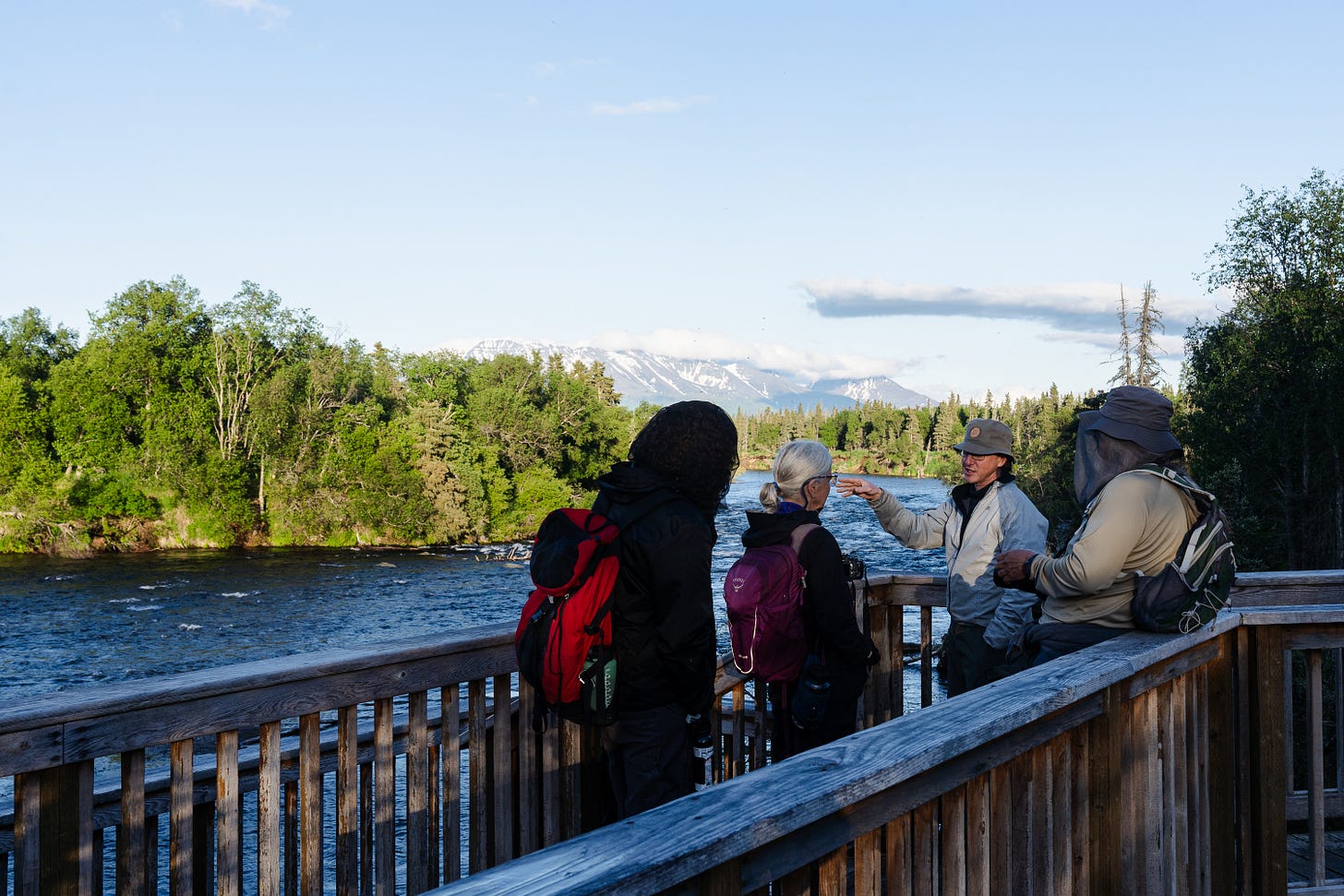
This is all to say — I’m not alone in my love for the Brooks Falls bears, and in recent years, more mainstream media has been paying attention — to the bears and phenomenon of why humans love watching them over the internet so much.
The Atlantic: The Internet Is Obsessed With a Video Feed of Bears Eating Salmon
Smithsonian Magazine: How the Bears at Alaska’s Katmai National Park Became Celebrities
Wall Street Journal: What Beats a Fat Bear? A Fat Baby Bear (Follow Angela Owens for the premier bear content)
What I’ve really been looking forward to is sharing about the specific bears I got to know during my stay.
Here’s a glimpse of the cast of characters I watched all week:
747, Bear Force One
Winner of last year’s Fat Bear Contest (and a handful of other years as well), 747 is known for his size. During Fat Bear Week a few years ago, he was estimated to be within margin of the largest wild brown bear ever recorded. It shouldn’t come as a surprise that his hallmark move is getting so fat that his stomach drags on the ground. Online and in person this year, people have been marveling at how big he is when he’s supposed to be at his skinniest. I feel honored to have witnessed his first catch of the season. For those wondering: he was assigned the number 747 as a cub, and just happened to grow into an appropriately large unit.
747 identifiers: dark coloring, rotund, missing some of his left ear, uncanny resemblance to an old chocolate lab
128, Grazer
Possibly the best bear around (don’t tell the other bears I said it, but it’s just true okay!!!), Grazer is one of the most skilled fishers on the falls and is known for not taking other bears’ shit. I wish I was exaggerating, but I’m being dead serious. When she has cubs, she’s the most protective mother around. There’s actually a word for when bears encroach on her space and feel her wrath — it’s called getting grazered. Watch this compilation of bears getting grazered. She caught the most fish while I was at the falls. It’s pretty common for her to put the big boys to shame.
Grazer identifiers: blonde coloring, big ears, probably fishing in the Riffles or the Lip, likes to stand on rocks and point while fishing
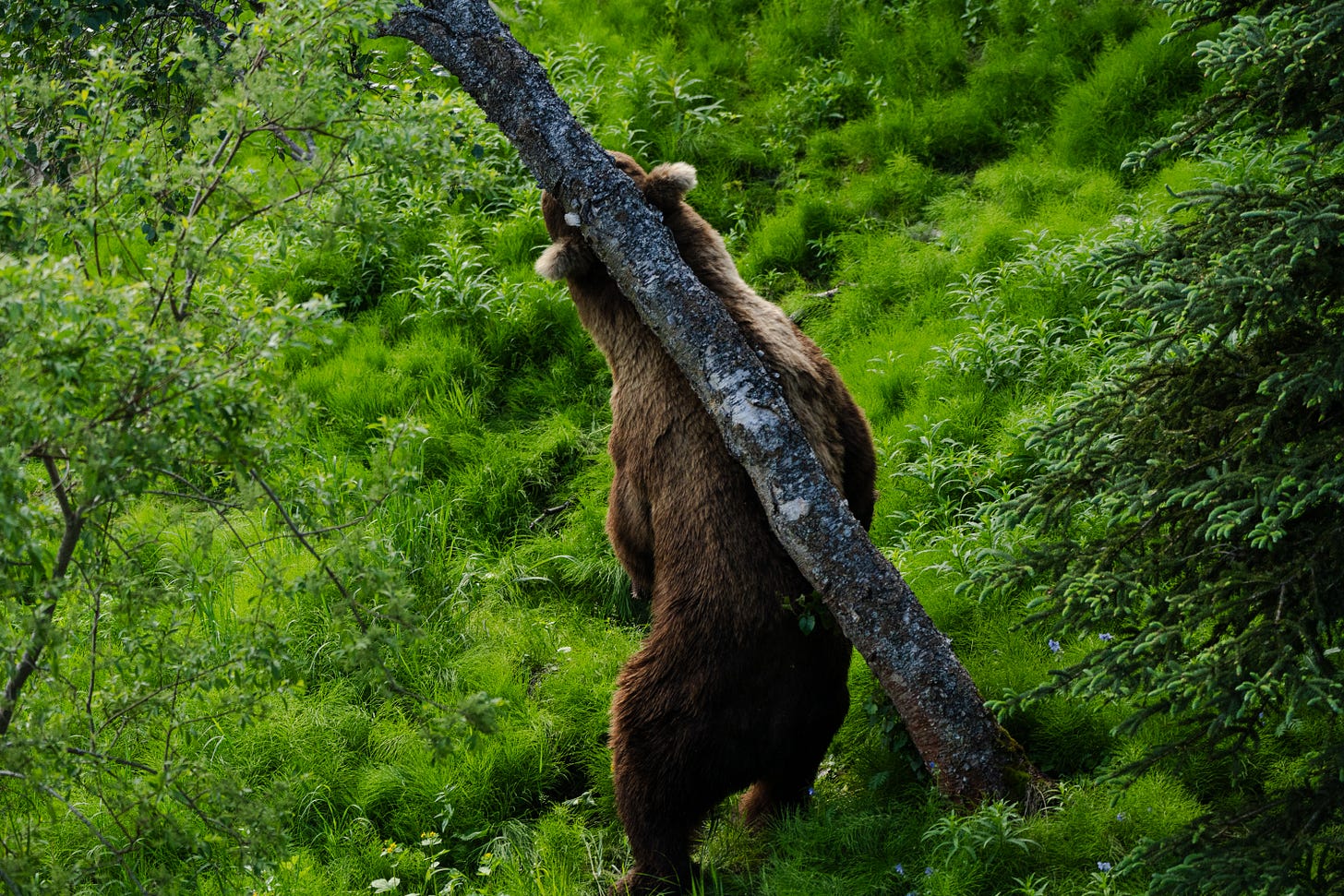
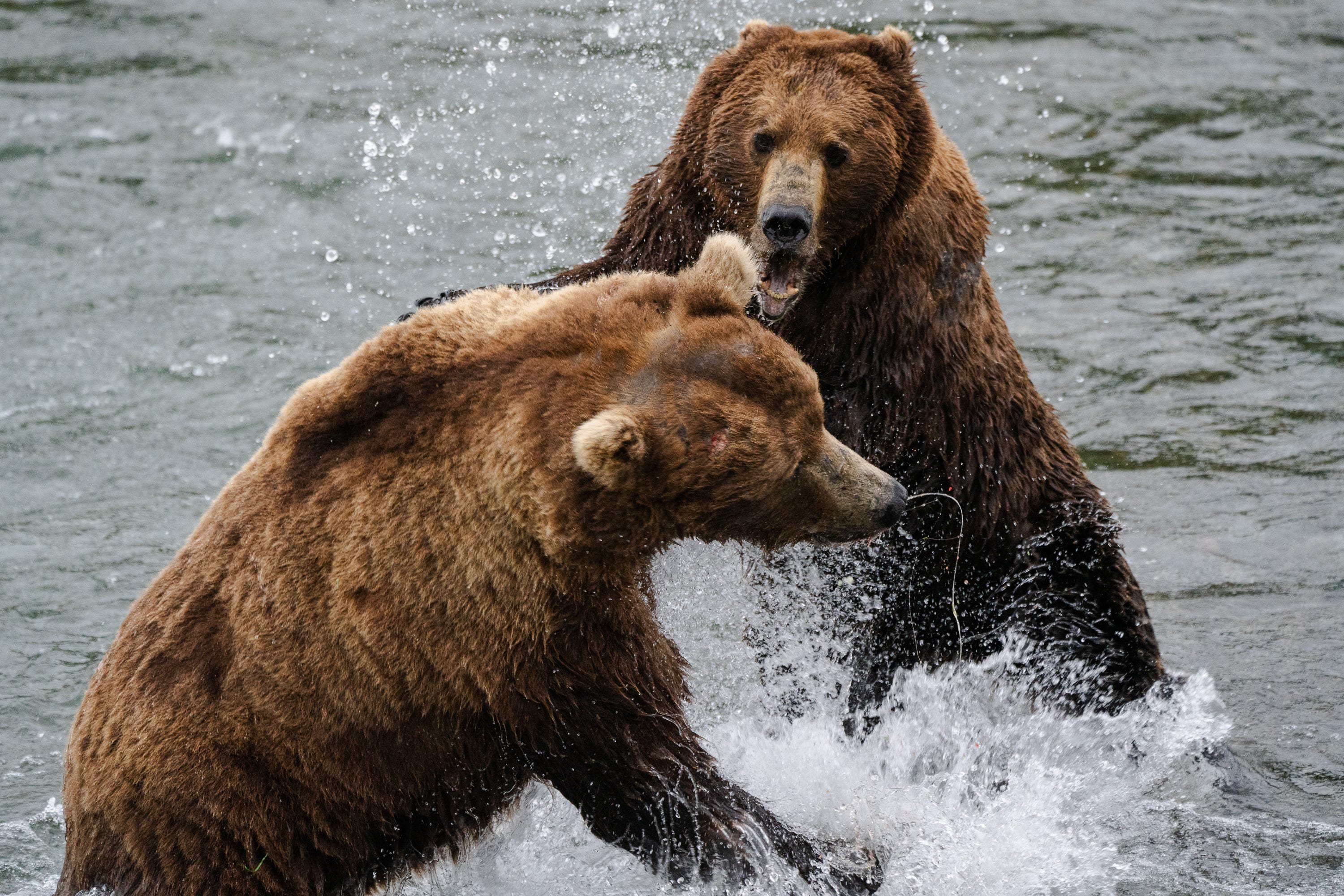
856 doesn’t have a nickname, but he definitely has a reputation. One of the most dominant (if not the most dominant) bears at the falls, 856 isn’t afraid to pick fights and assert himself. That’s kind of his M.O. In fact, I got to see him telling off 151 Walker. See above: 856 is the one with his back to the camera. It may look like Walker is on the offense, but 856 actually initiated the interaction and ended up chasing Walker off. Here’s a video of the showdown. Experts describe 856 as having a cascading effect on the behavior of other bears when he is present at the falls — they know who he is and don’t want to mess with him.
856 identifiers: wide-set ears, beady eyes, and is often seen licking his lips or with his tongue out
151, Walker
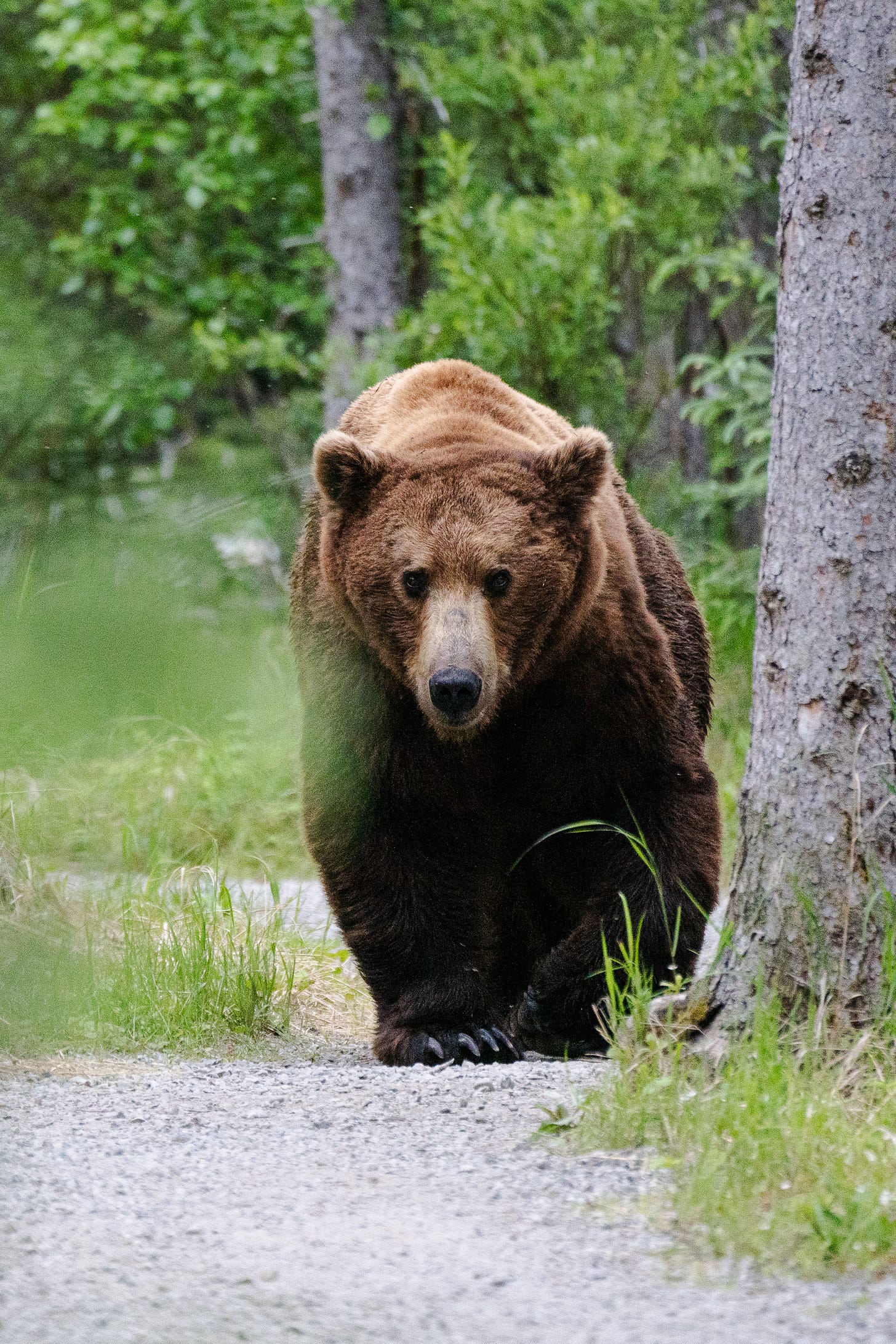
In case you couldn’t already tell, Walker is a goofy guy. He’s known for play fighting with other bears, though now at his age and size, he has a “seat a the table.” That didn’t stop him from getting put in his place during a spat with 856. After the fight, he lingered downstream of the falls for a day or two, watching the falls warily. He was seen napping in Brooks Camp very early in my stay.
Walker identifiers: Very cute face (in my opinion), scar on his left shoulder
910 + 2
Brown bears are solitary creatures and usually keep to themselves, especially when competing for food and space. But the surplus of salmon at Katmai, coupled with the familiarity of the place for many bears, makes for unique circumstances. 910 (pictured above) and her sister 909 (not pictured, but has been spotted at Katmai this season) surprised experts and people online alike last year when they reunited with their cubs at Brooks Falls, and were often seen playing and fishing together. This was the first time that this kind of behavior was observed in bear cam history.
Some important vocab:
Beadnose family / Beady Bunch: Refers to the lineage starting with 909 and 910’s mother, 409 Beadnose, who sadly has not been seen at Katmai since 2018
Beadettes: 909 and 910’s offspring. 910’s 1.5 year old cub is known as 910 Jr, and 909’s emancipated 2.5 year old cub is known as 909 Jr.
But the story doesn’t end there.
At 2.5 years old, 909 Jr. was emancipated earlier this summer. Emancipation, or bear family break-up, is the natural process of a mother bear separating from her cub(s). This event is usually prompted by the mother bear entering her estrous cycle, more colloquially known as “heat,” which makes her more receptive to mating. To protect her cub(s) from larger males, she must drive them way (literally chase them away), sometimes preemptively. These newly subadult cubs must learn to navigate life without their mother as their protector, and it can often be stressful and confusing.
Such was the situation that 909 Jr. found herself in, until she was quickly adopted by her aunt 910 and cousin 910 Jr. That’s right: 910 adopted her niece. The trio were spotted together not long after 909 Jr. separated from her mother. As you can imagine, adoptions in the wild are not common, but with this family, anything seems to be possible. Since then, the adoption has been confirmed by experts. If you think I’m making this stuff up, watch this video for more on the Beady Bunch.
For now, 909 Jr. has some extra time to learn how to be a bear with the help of her cousin and aunt.
I’ve always been an animal lover, but I never anticipated that writing bear profiles would be on my bingo card. In any event, here are some other bear pics that I hope you enjoy.
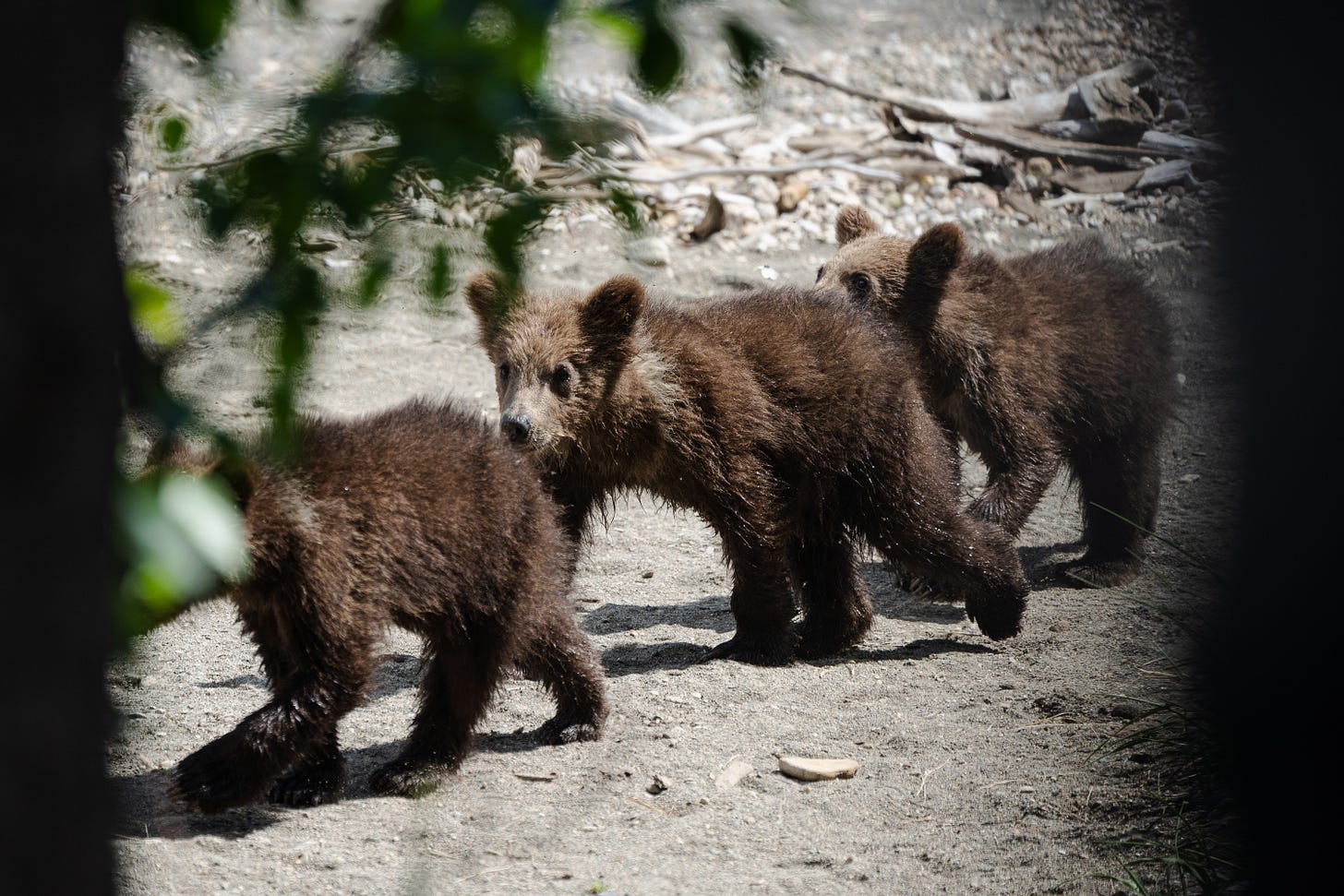
I always have to remind myself that I freelance so I can have the flexibility to live my damn life. Obviously there are pitfalls to the whole thing, like lack of benefits or institutional support. These days, the list can go on and on. But when I can convince myself to live a little, I usually don’t regret it. That is, until I get a call about my dream assignment the minute my plane takes off on vacation. I’ve talked to others about this and the phenomenon is real.

I had a long paragraph written about the woes of taking time off, not because taking time off is bad (time off = good), but just because of the pressures of this industry. Also not to mention the constant mental spiral of What if no one hires me again after I’m not available a few times??? Then I deleted it because it just felt like beating a dead horse. The TL;DR was that grind culture sucks, we all need breaks, and even though it’s scary to leave the place you work for a while, your community will be there when you return. So:
If you’re a fellow photographer: Treat yourself. Live a little. Touch some grass. Watch a bear online.
If you’re an editor: I love that you had time for some bears. Let me photograph a national park or some wildlife for you!
To everyone regardless: I hope you’ve come away with a little more bear knowledge than you started with.
Thanks for sticking around and taking any interest in my little life. TTFN✌️



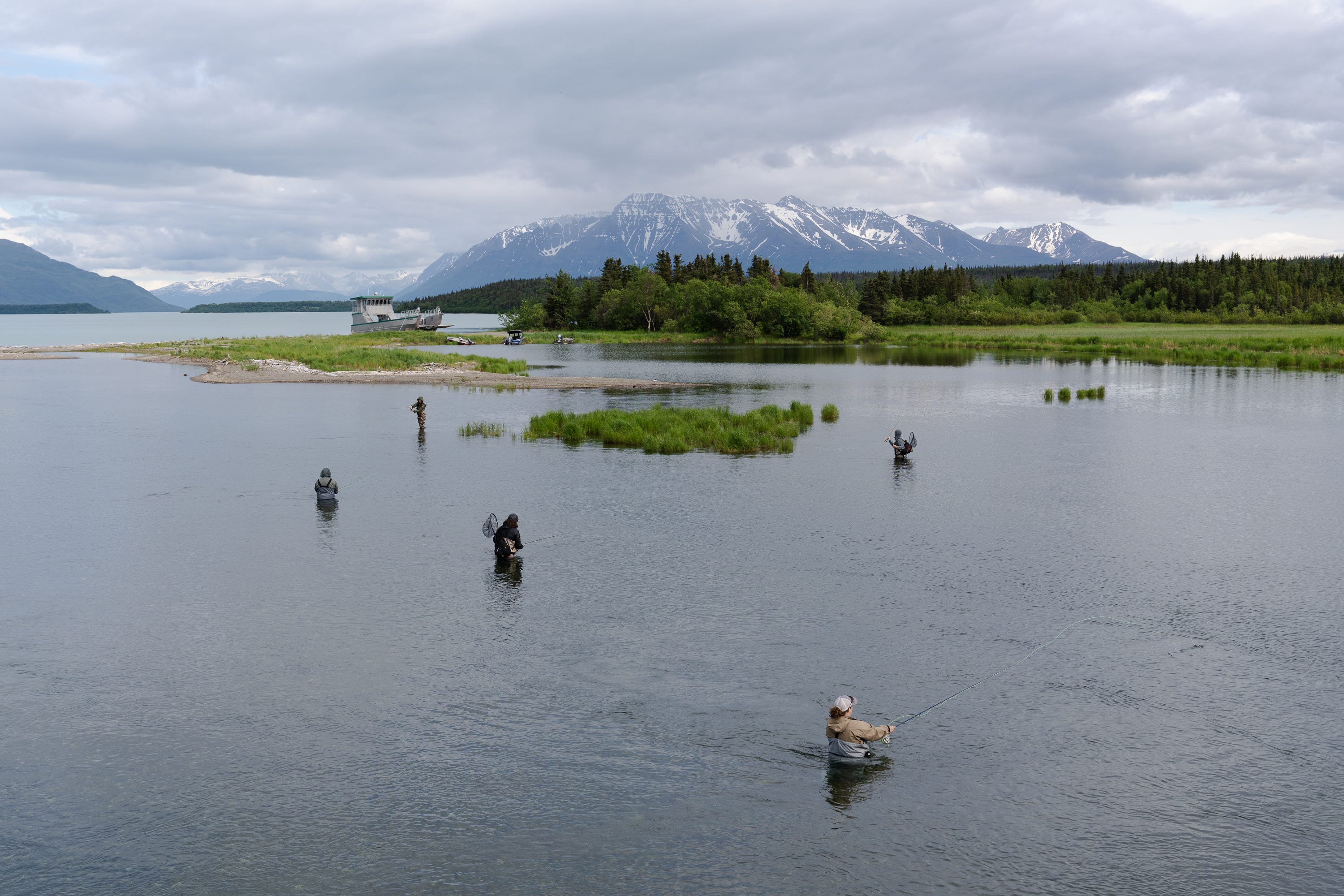
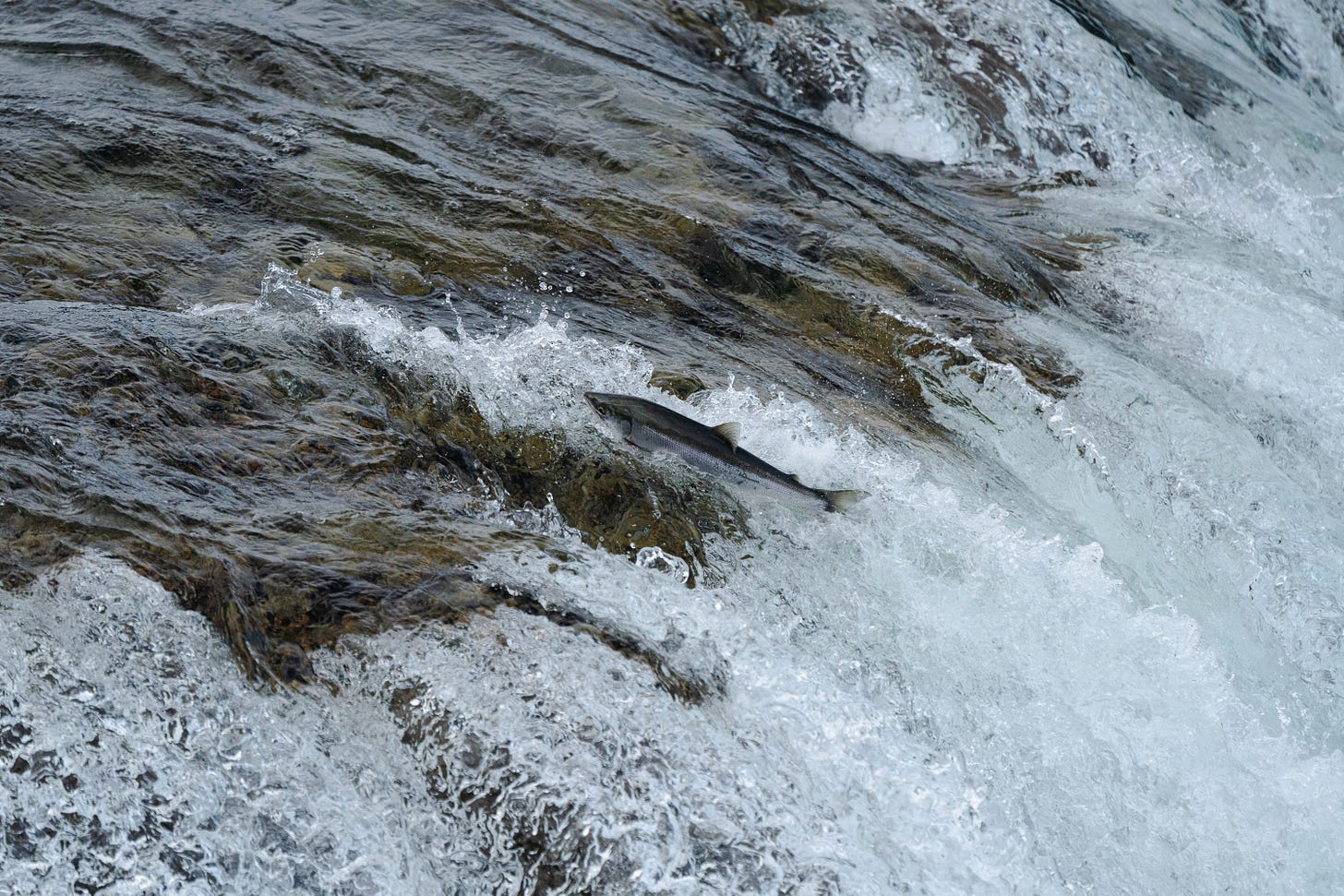
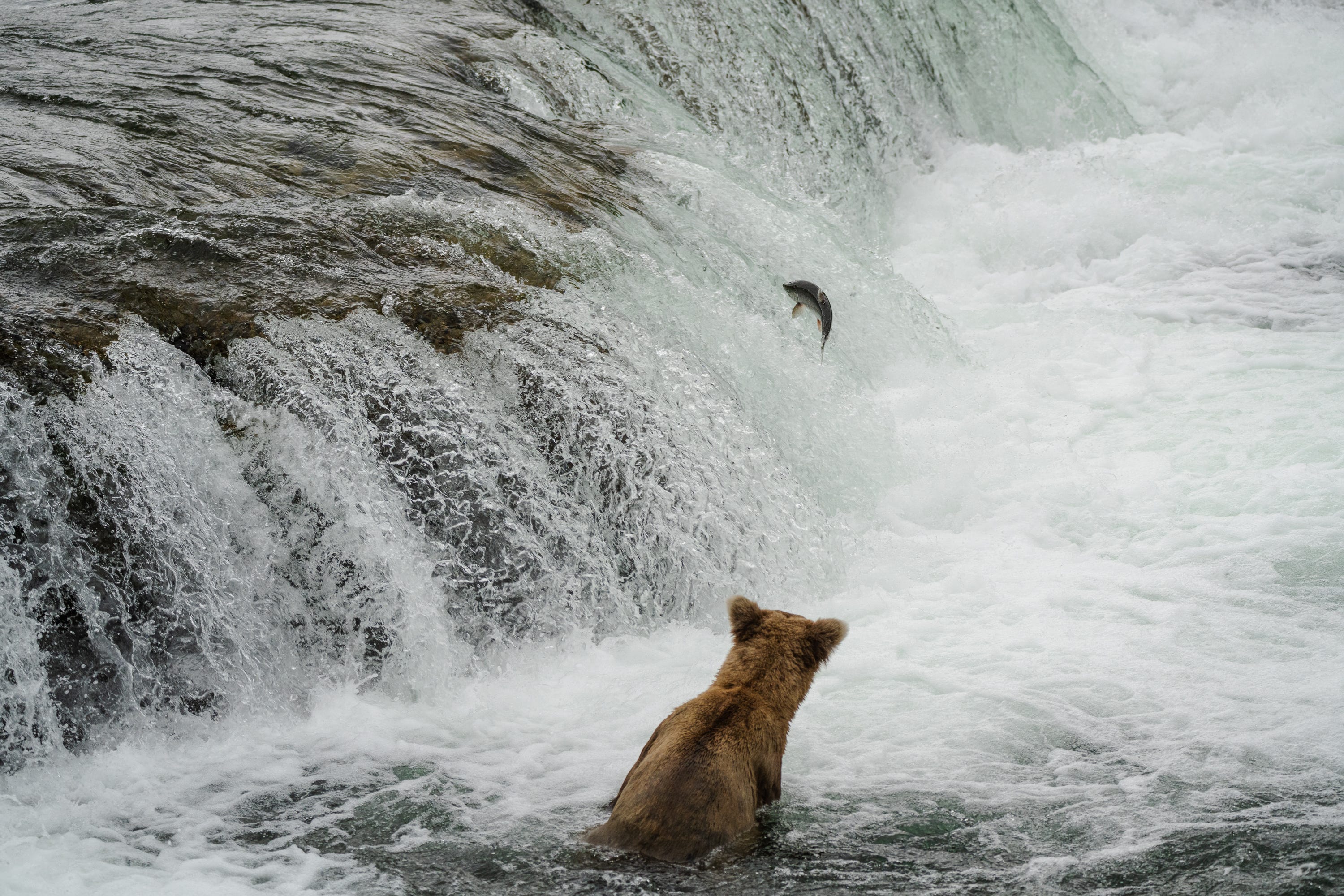
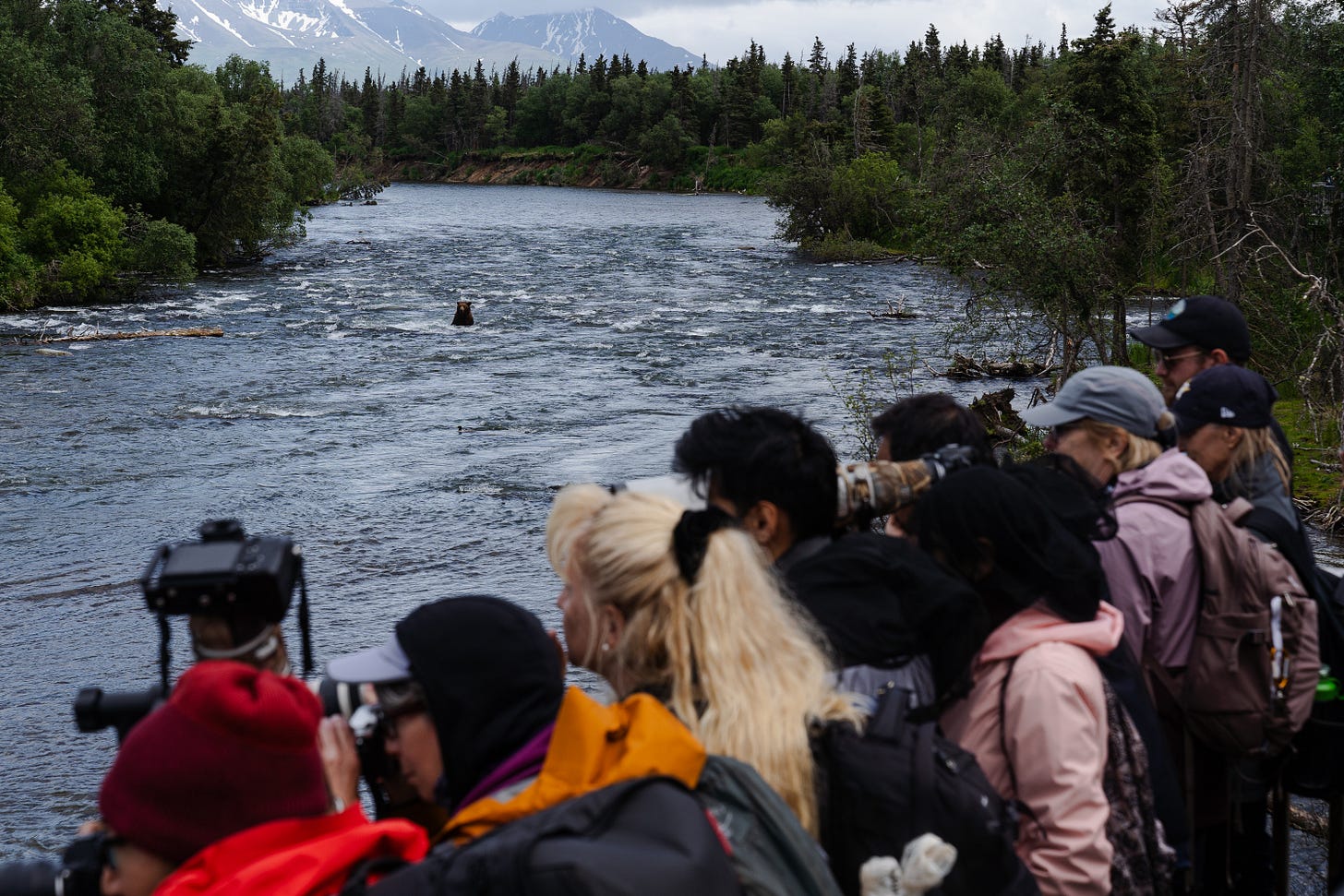
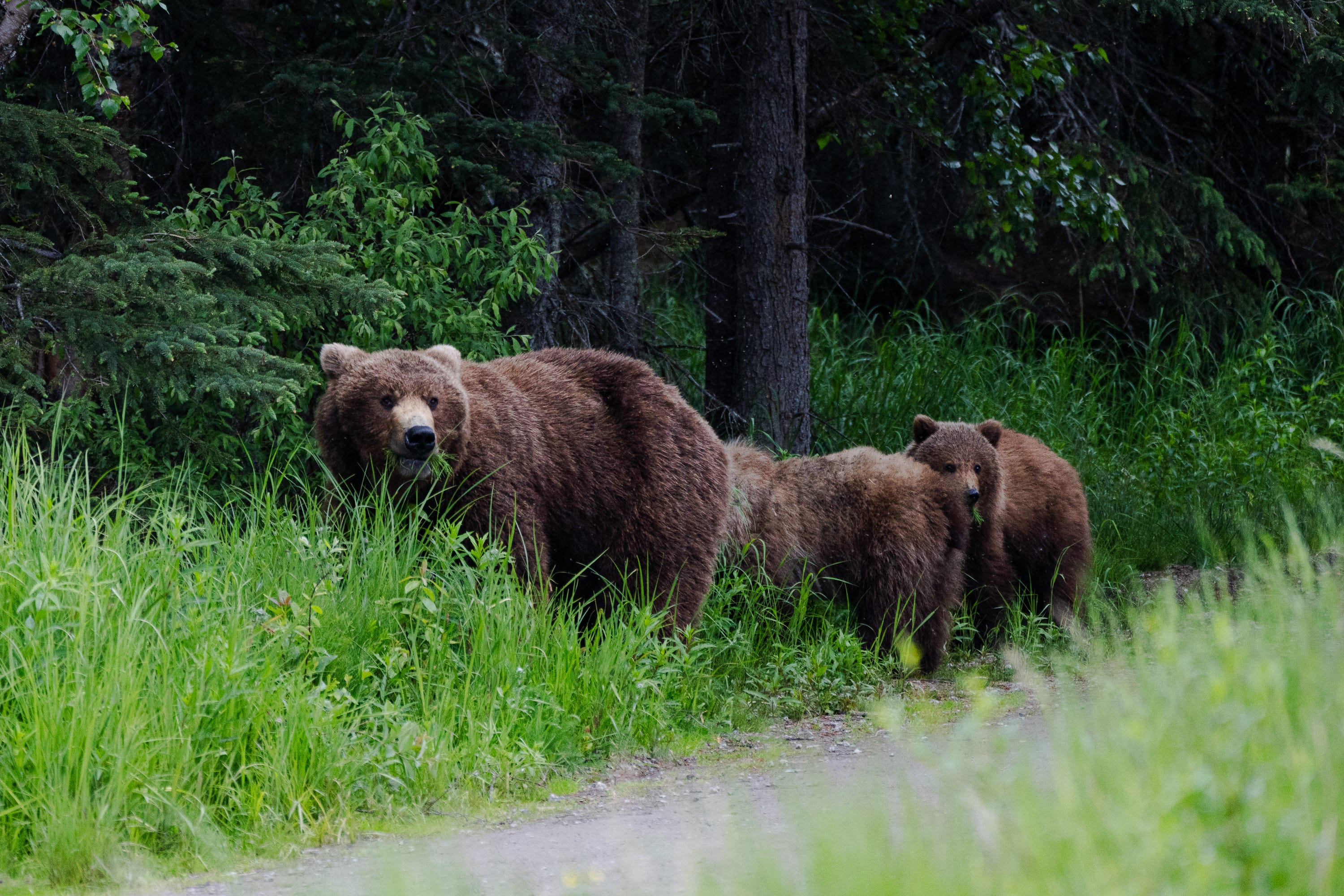
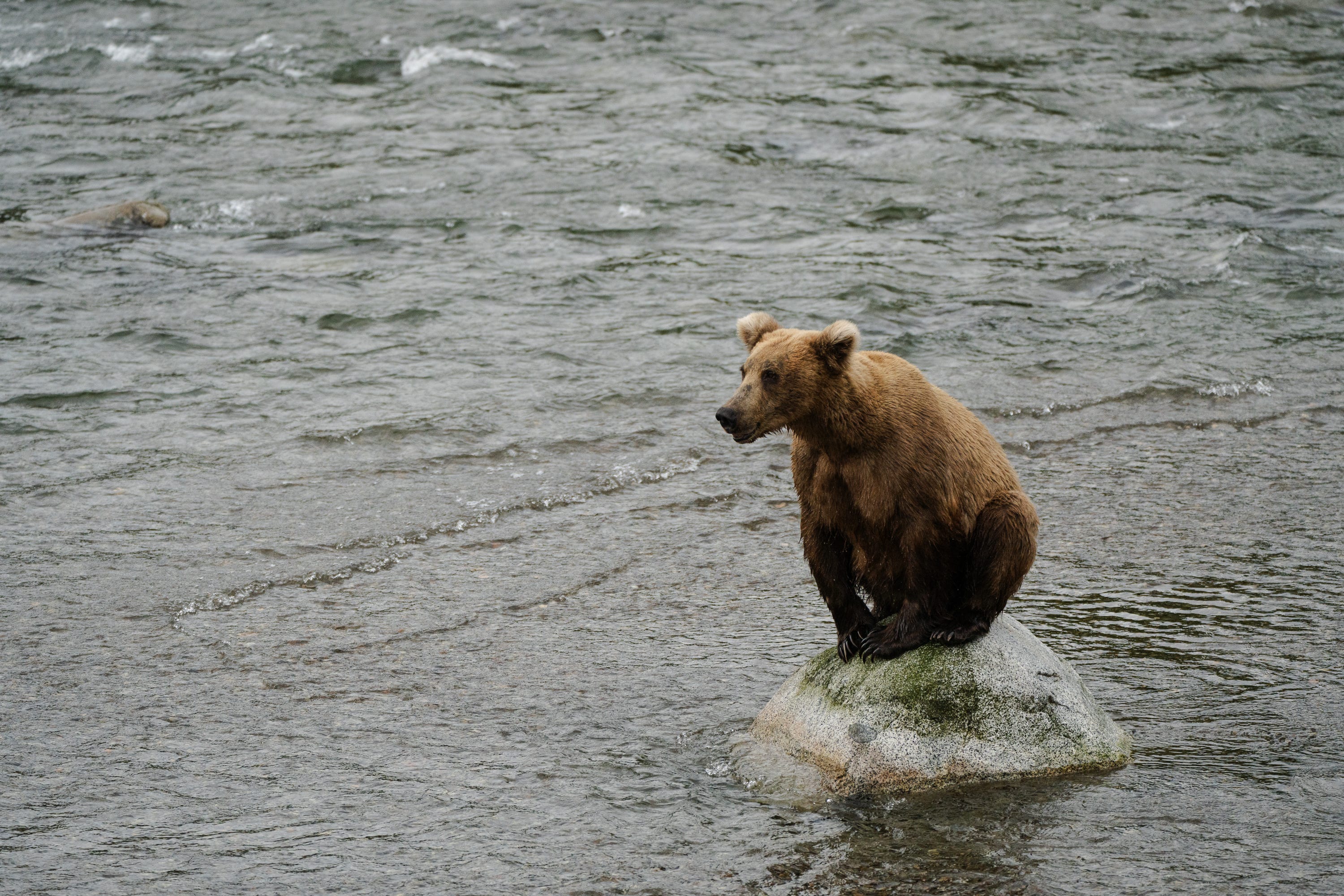
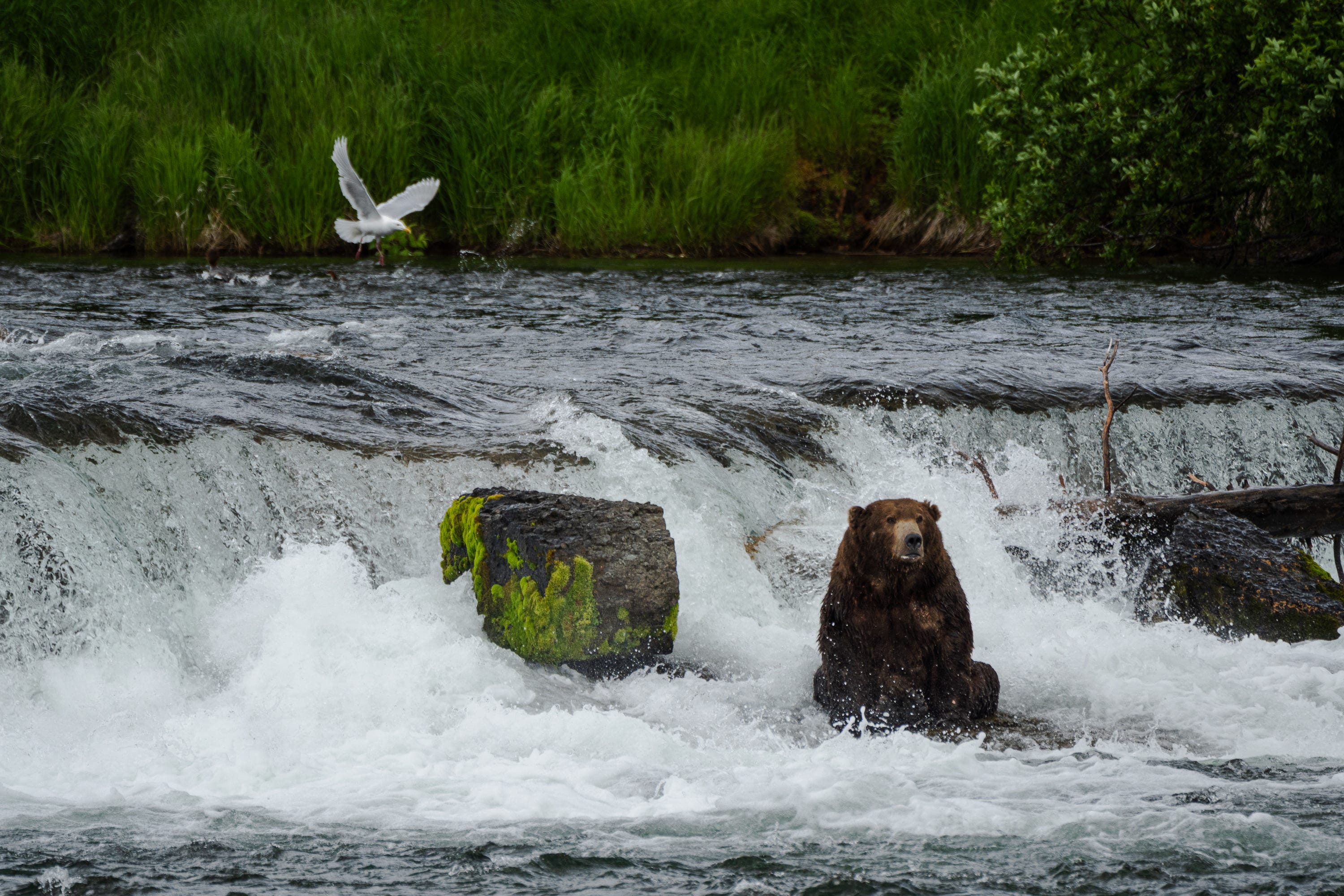
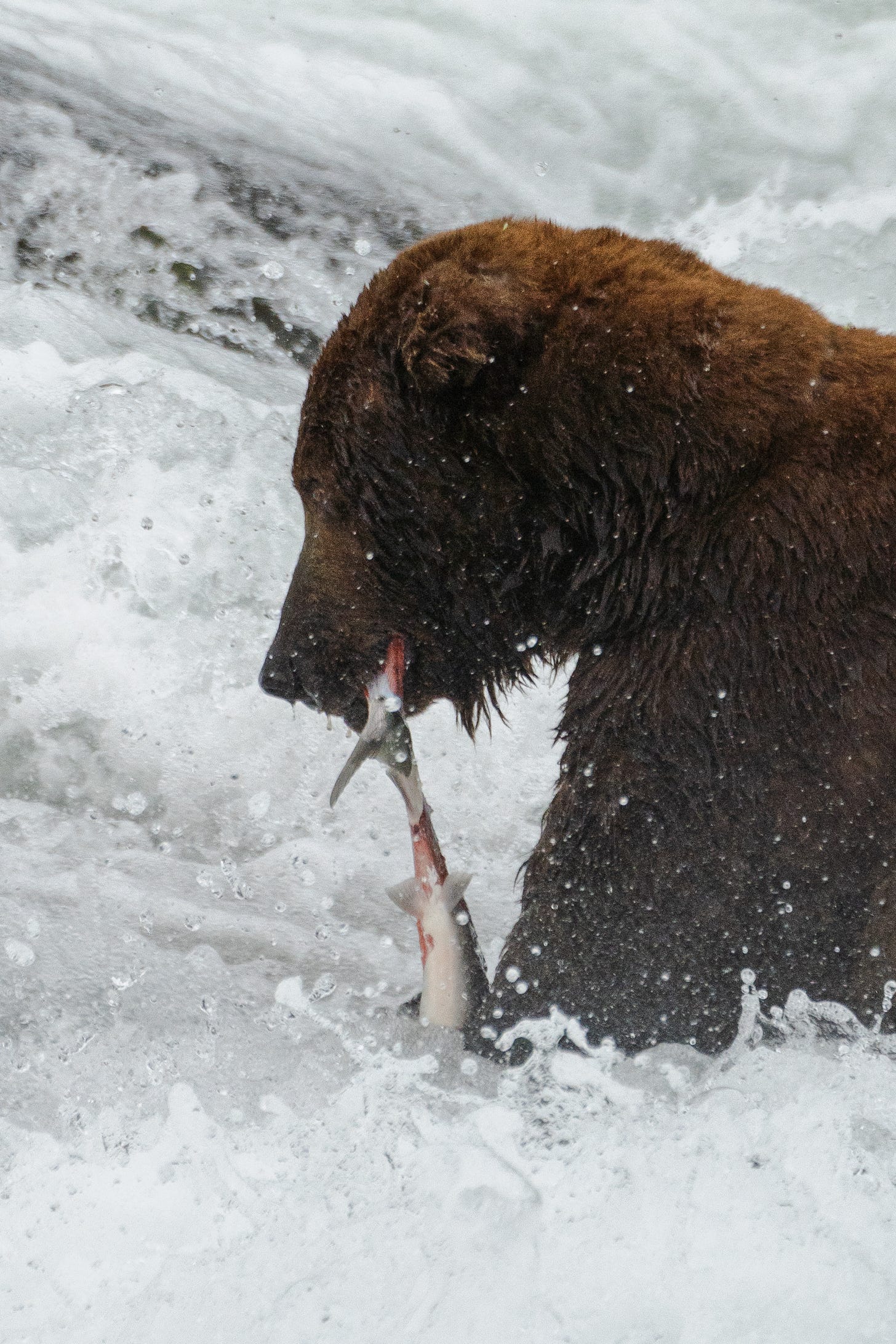
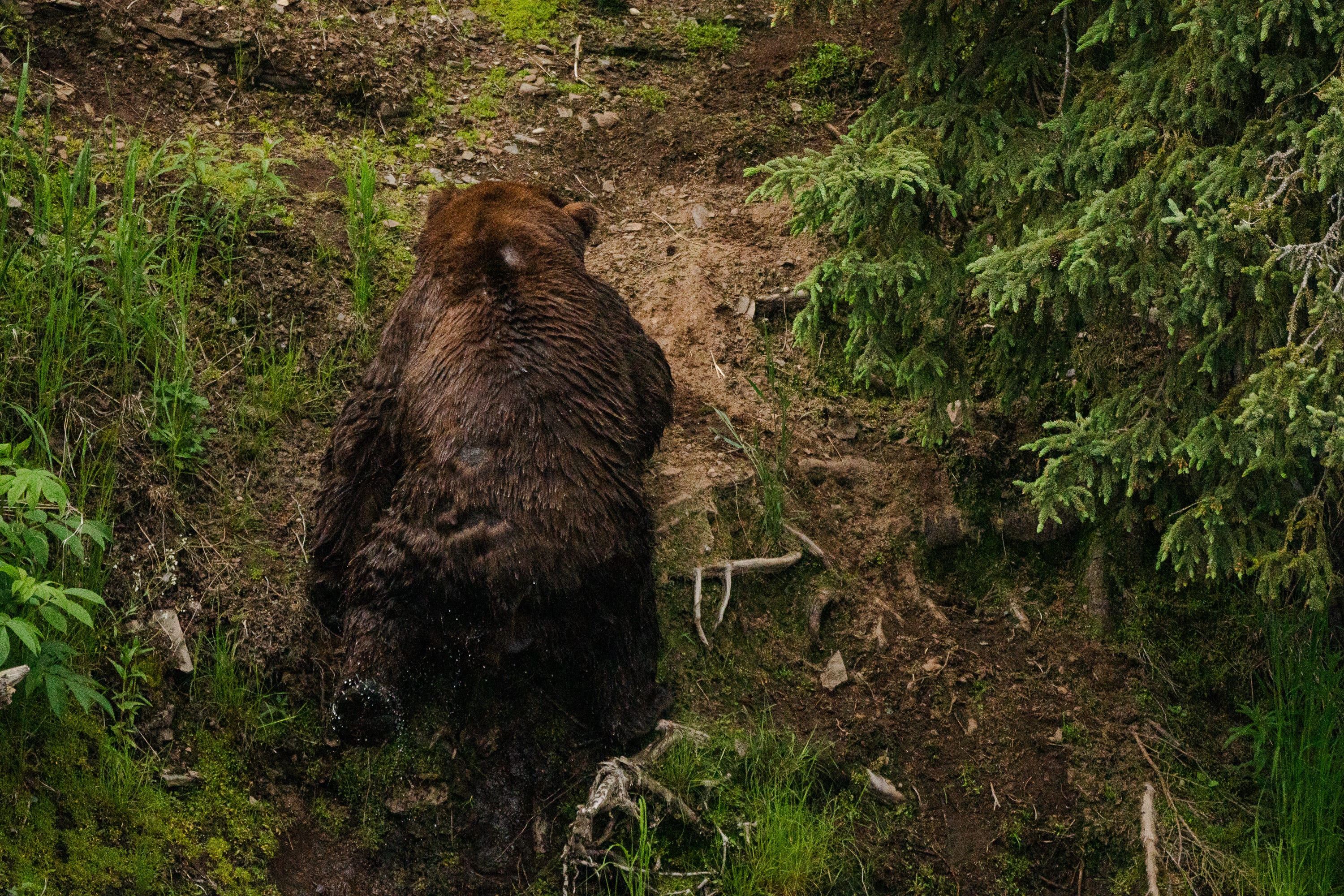
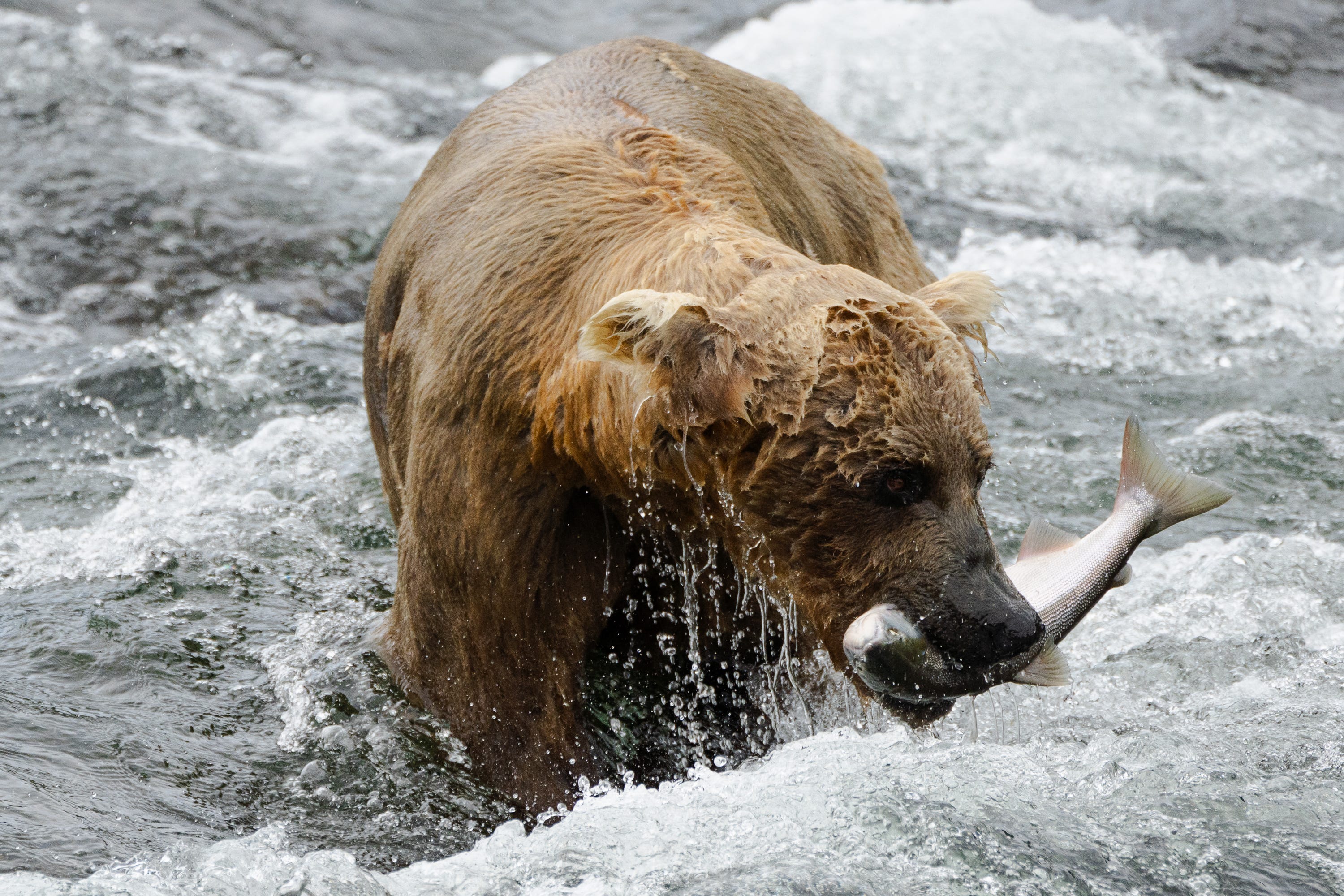

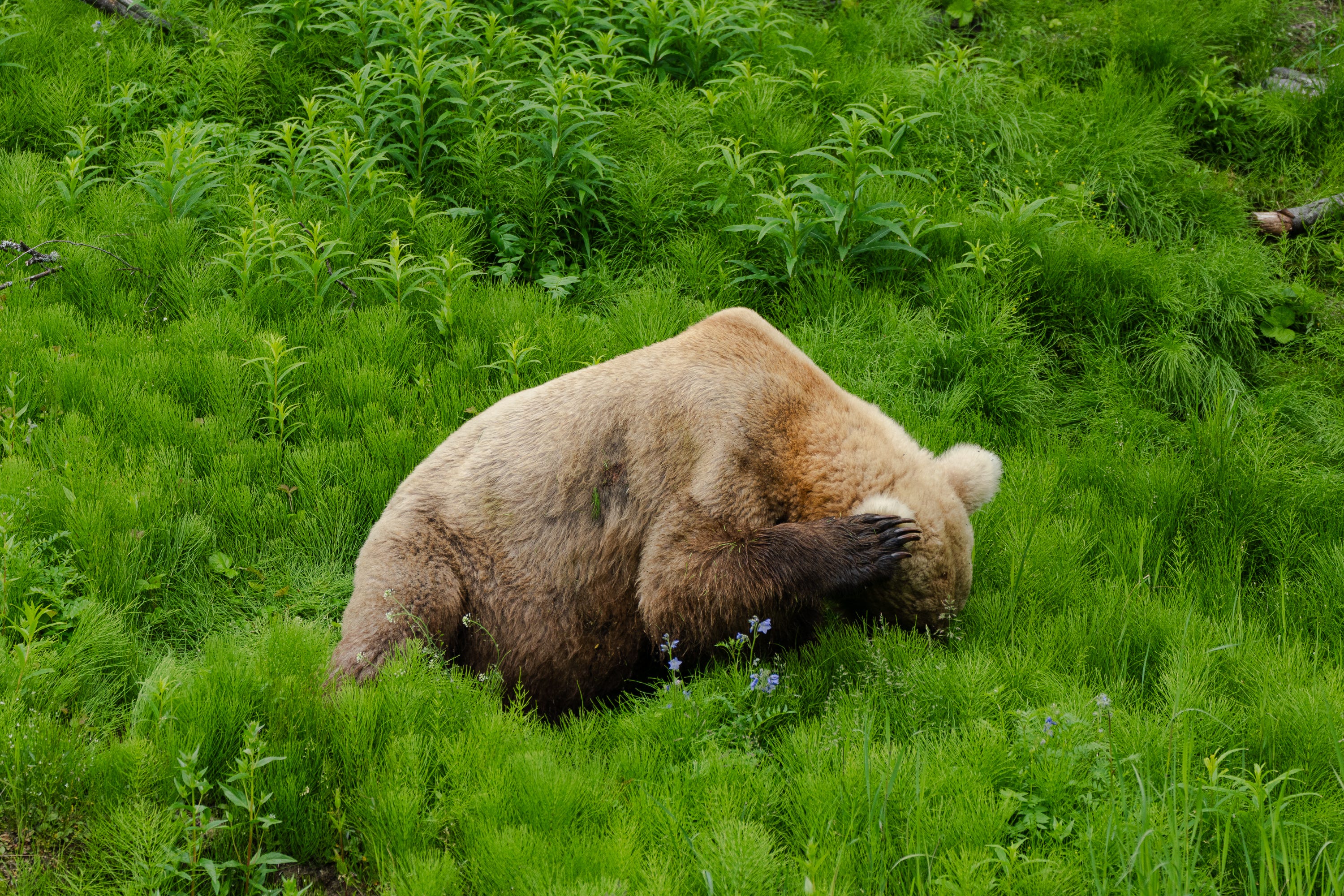
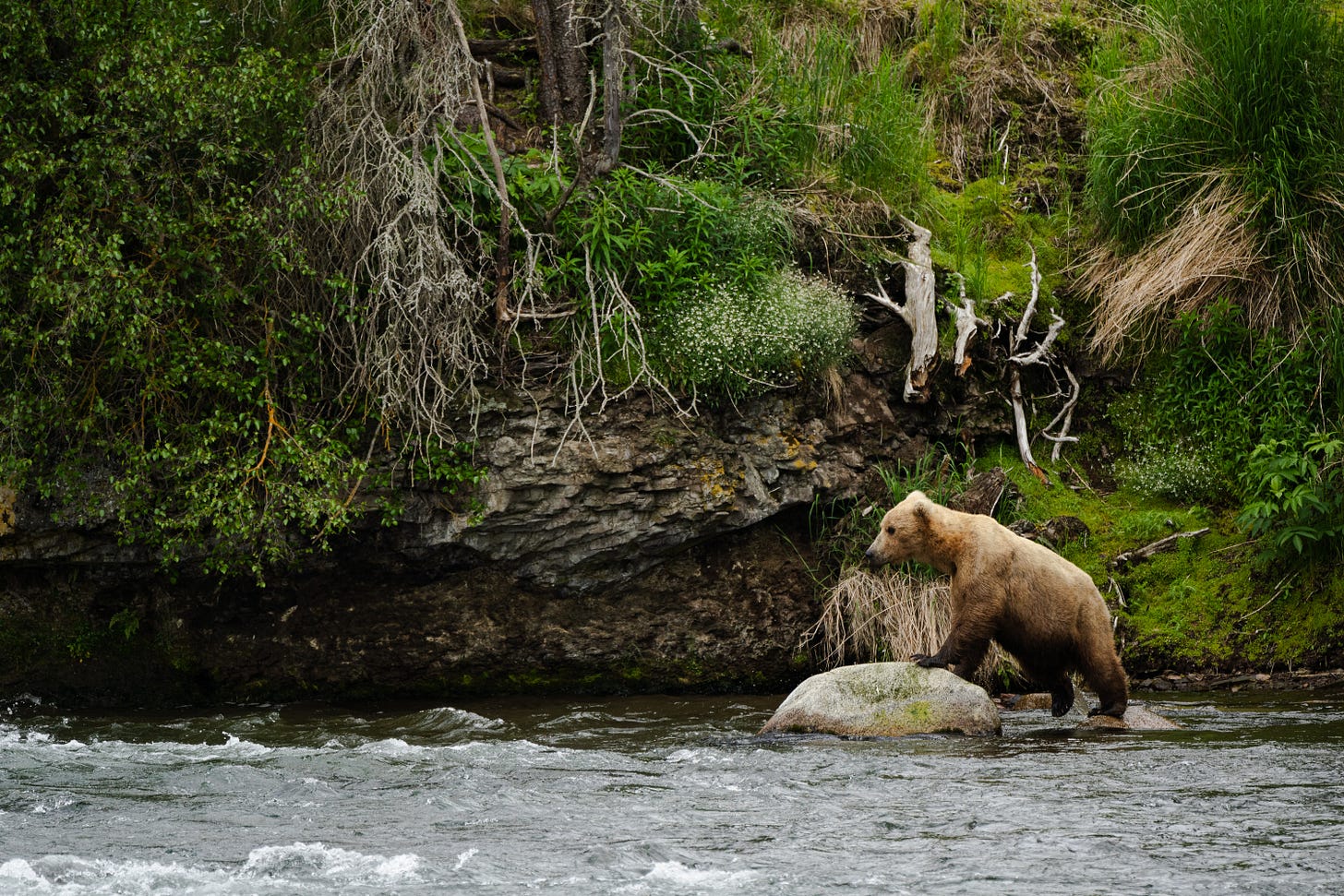

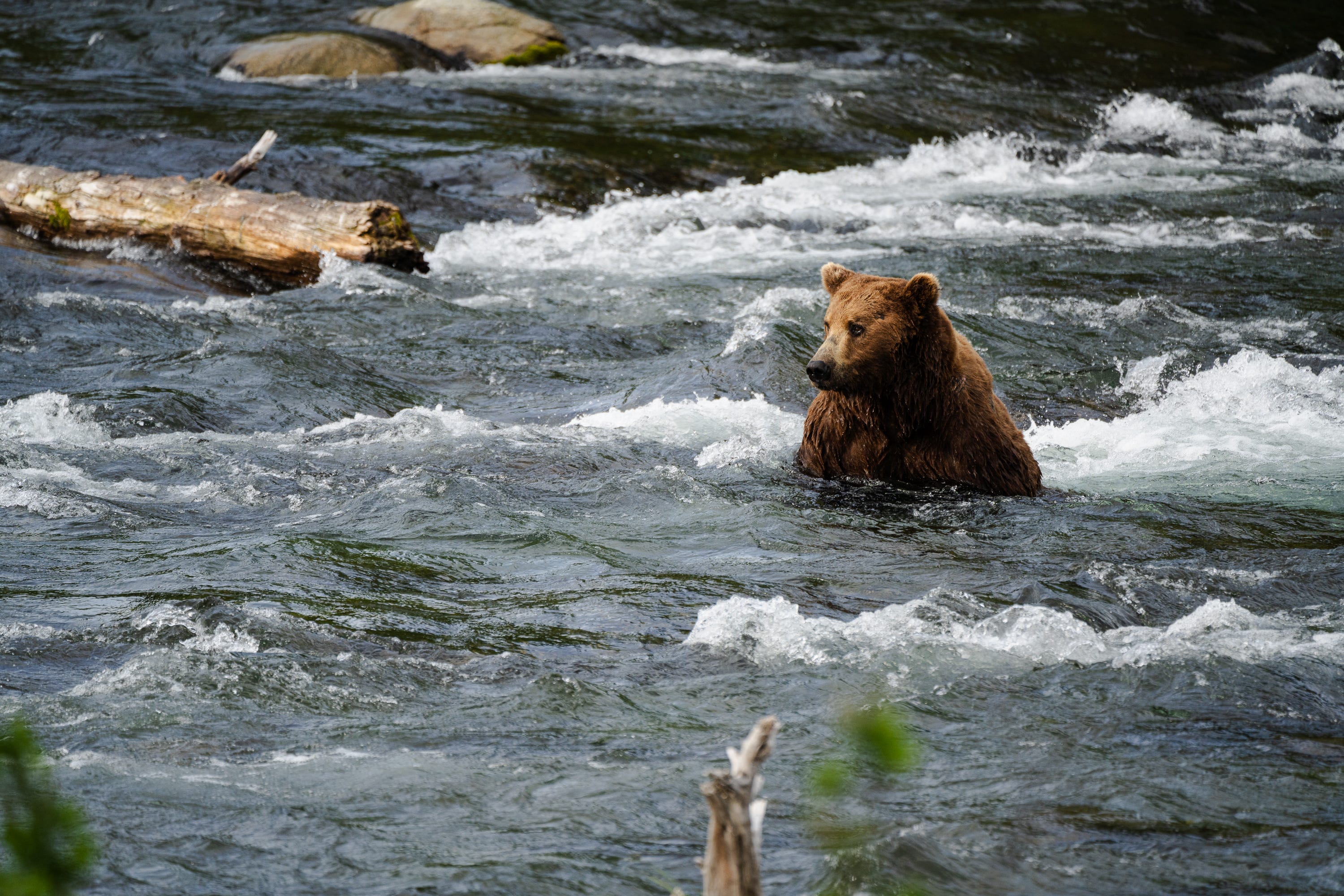
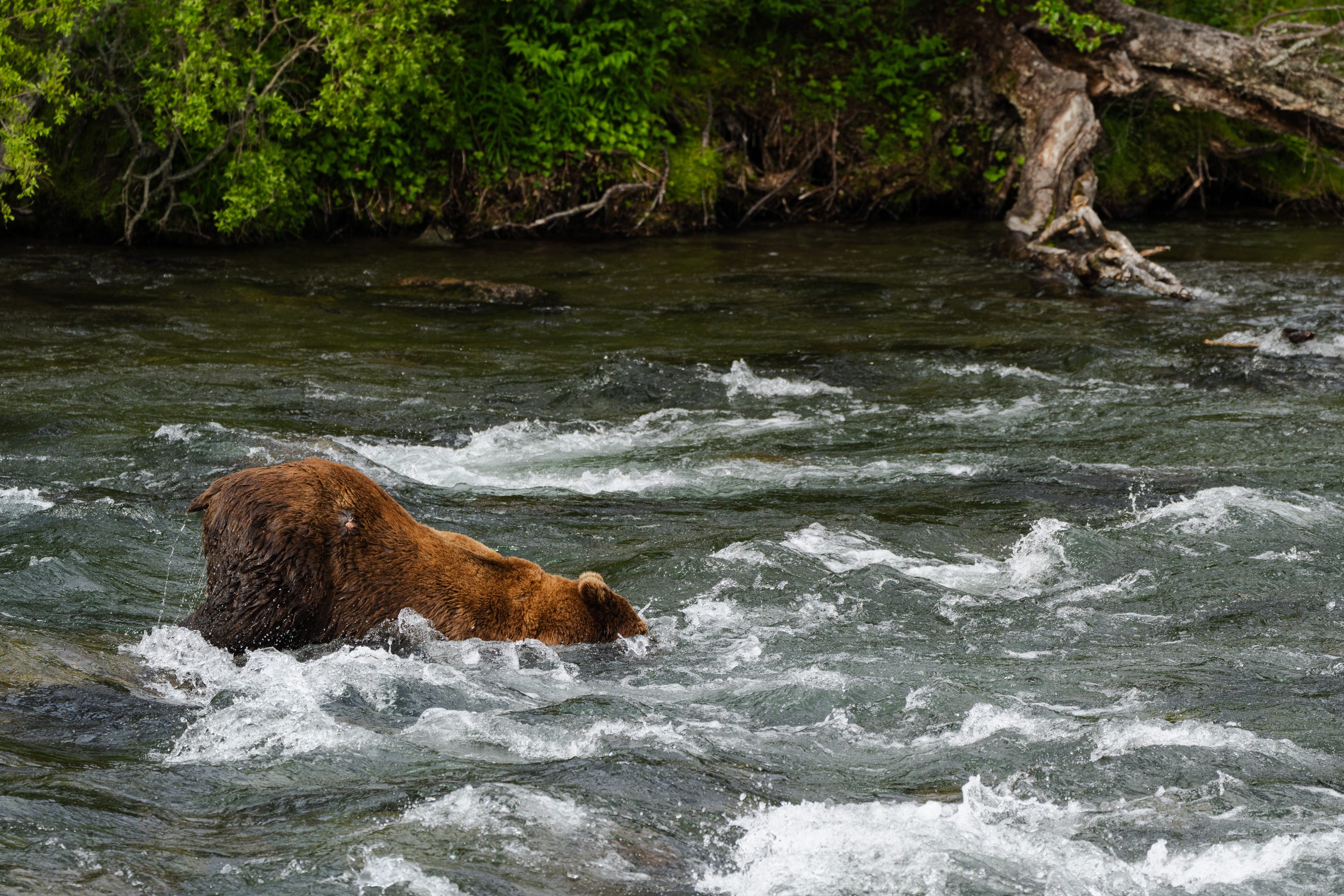
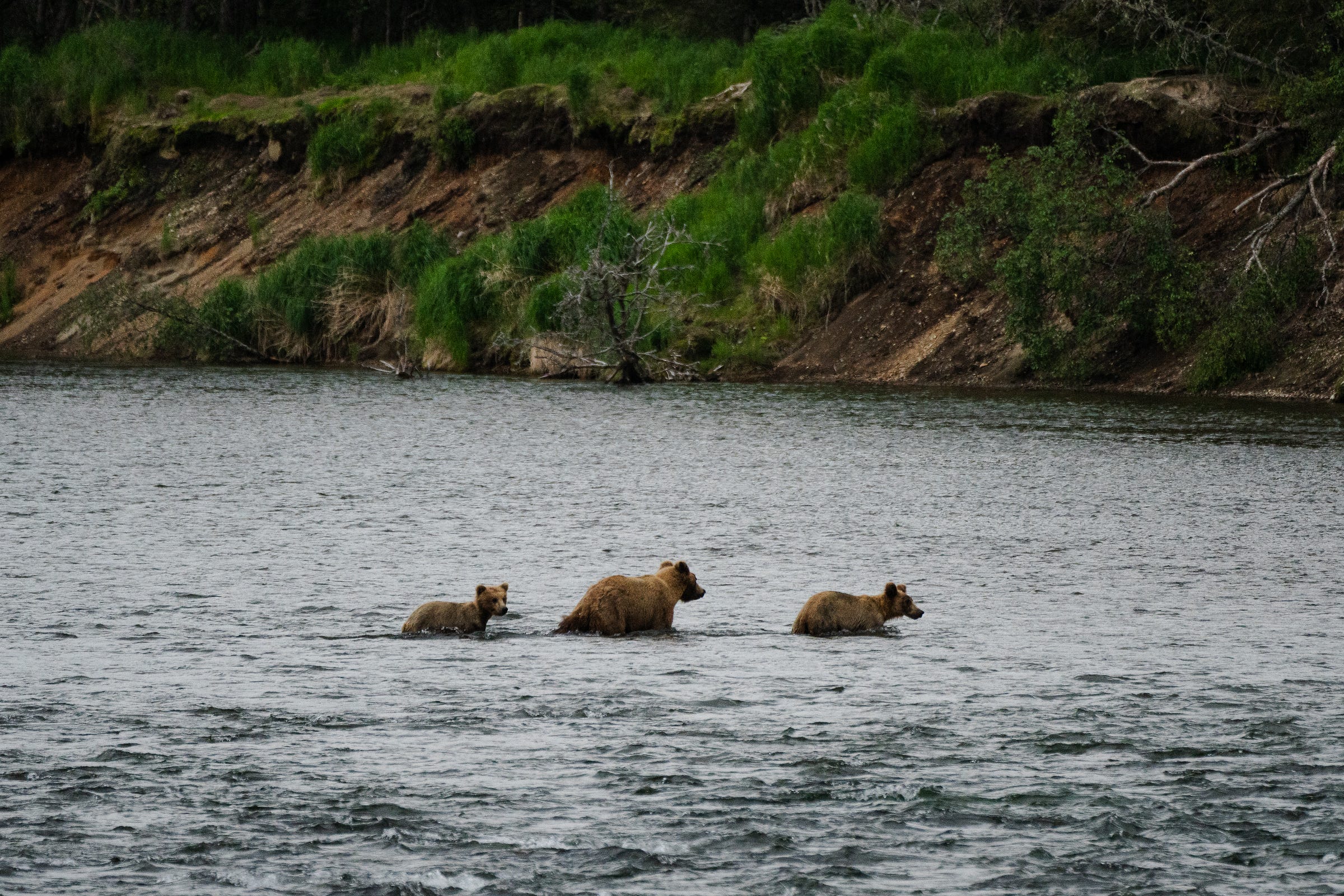
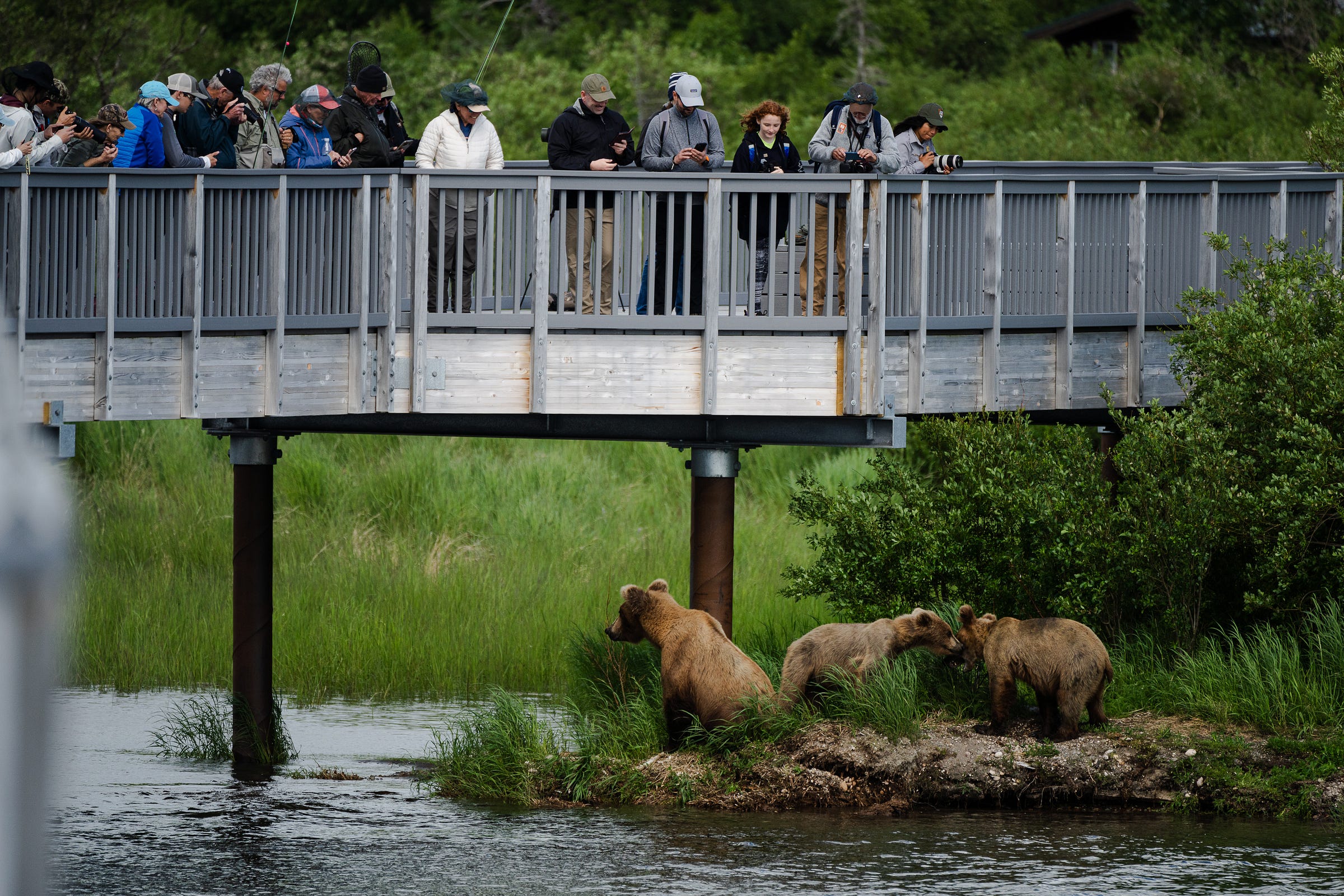
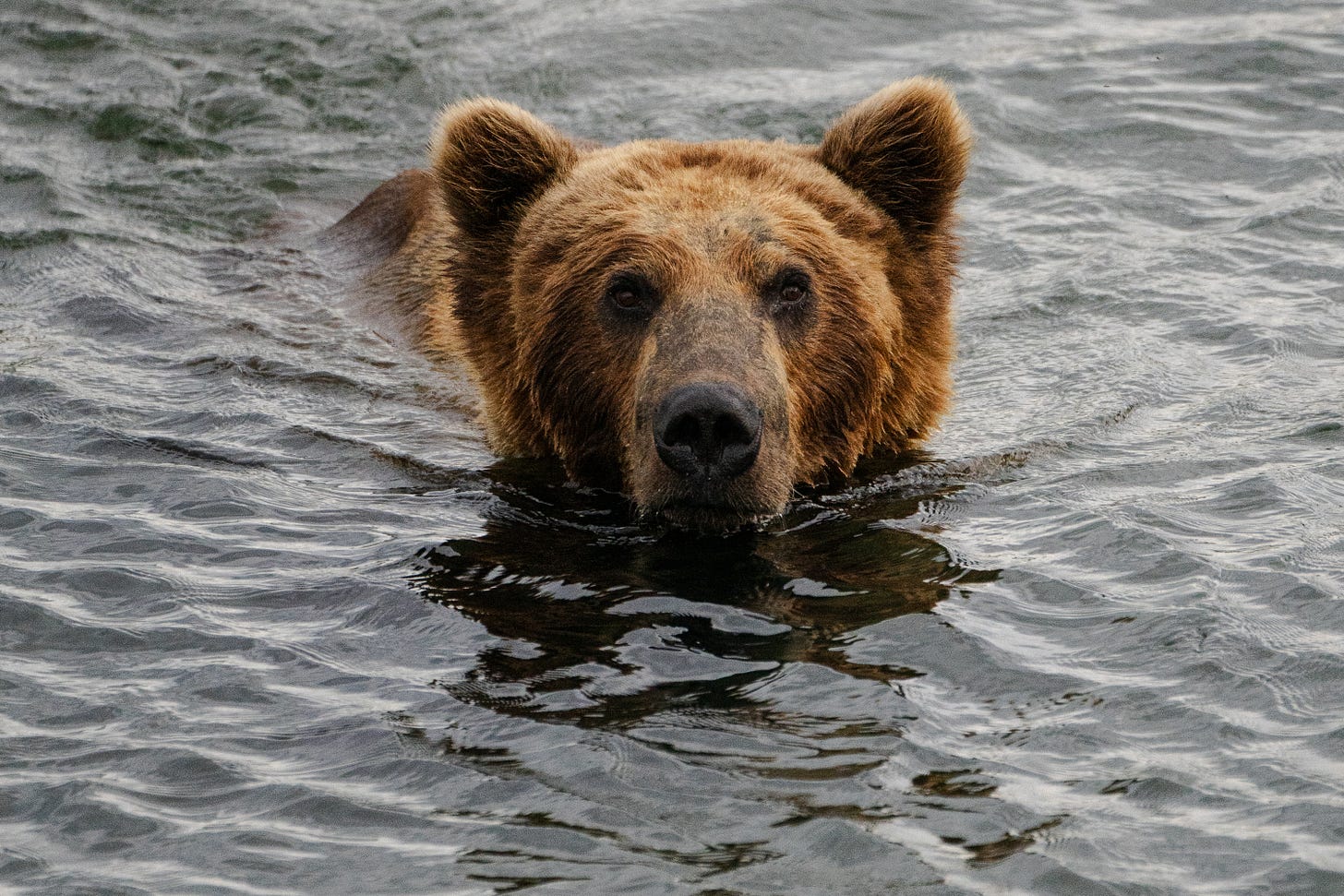

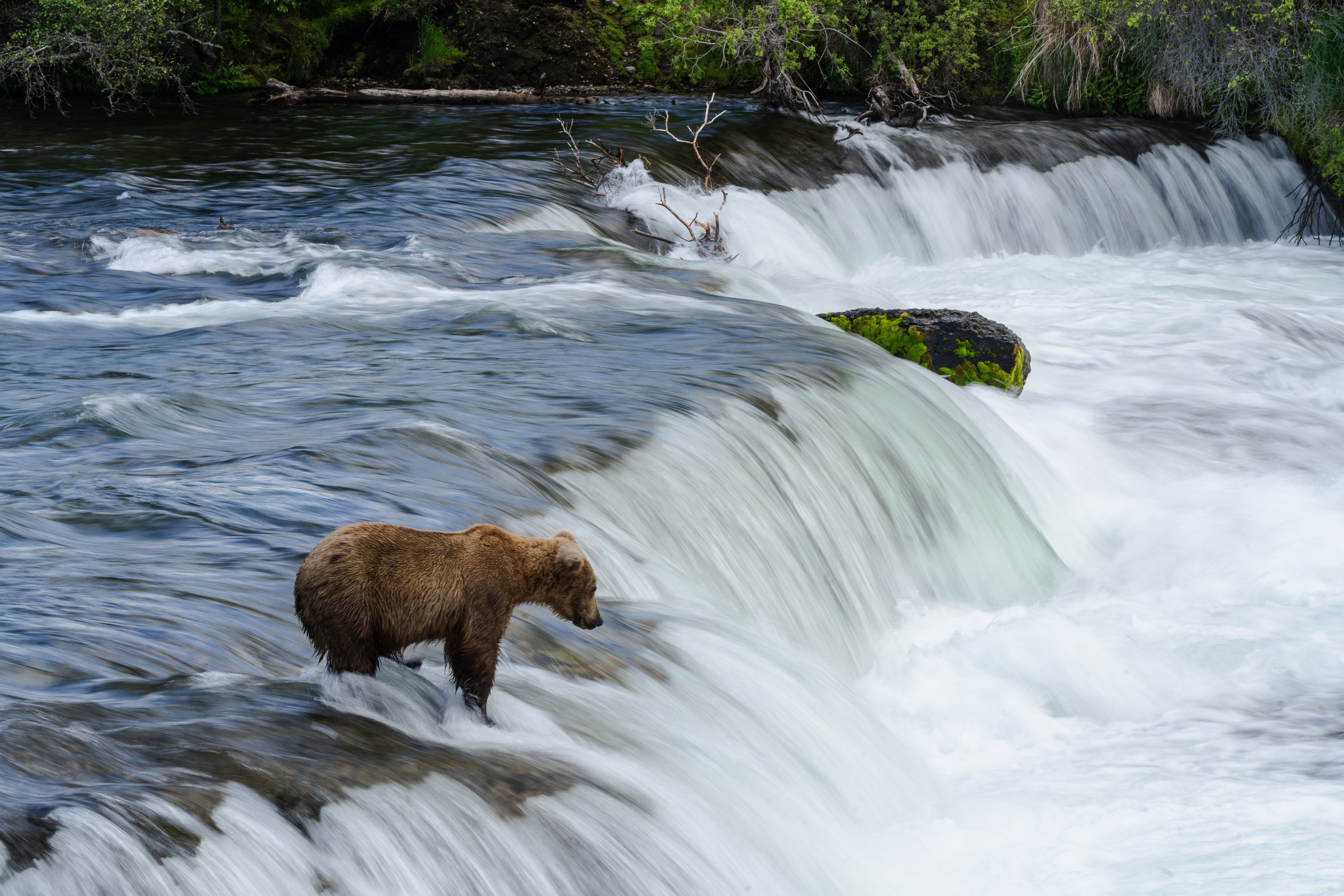

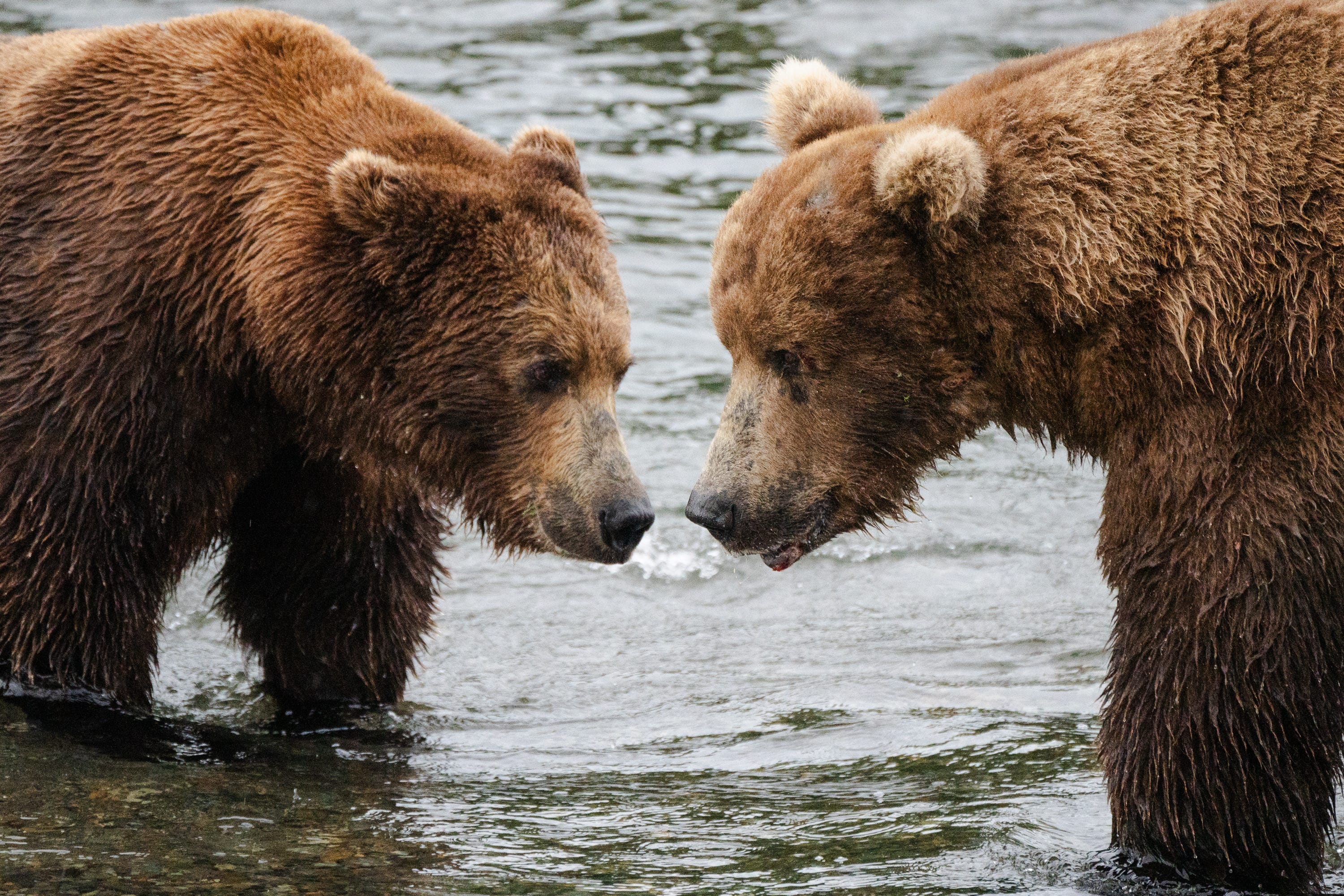


Sophie! Extraordinary photos! The profiles of the bears are not only informative but so much fun to read. Thank you for sharing them!
AMAZING!!!